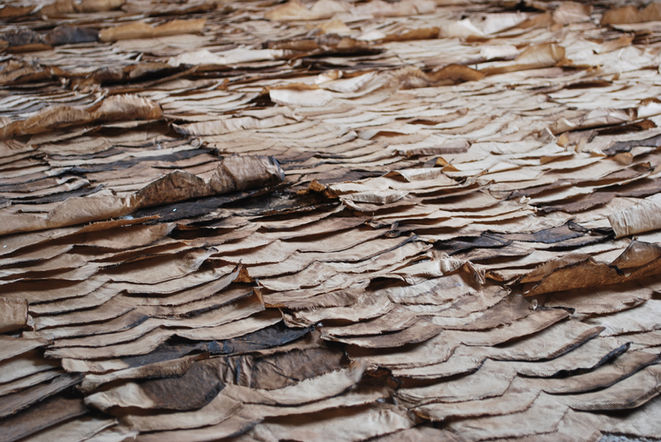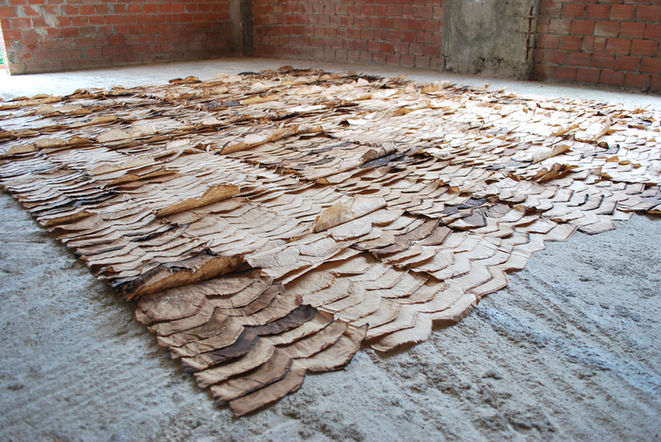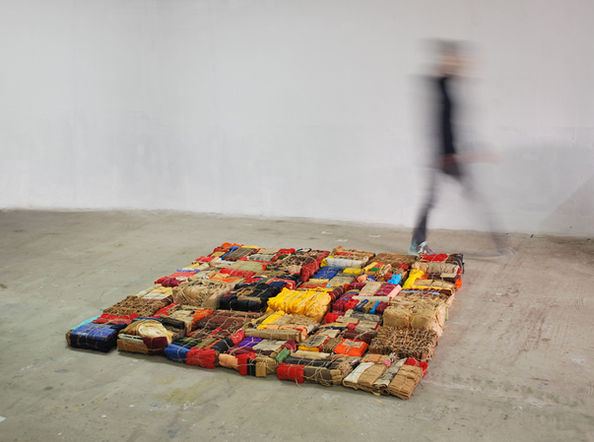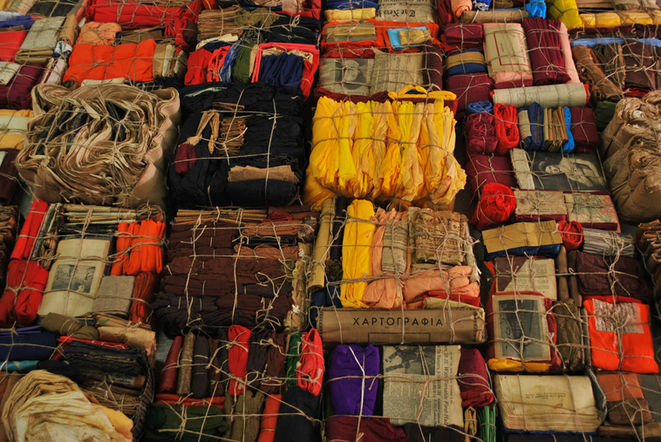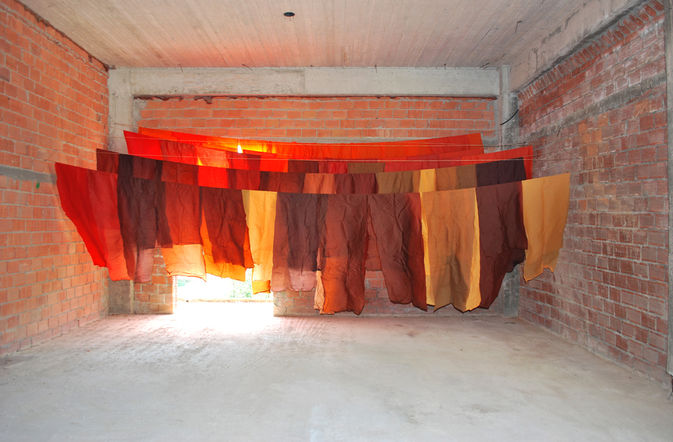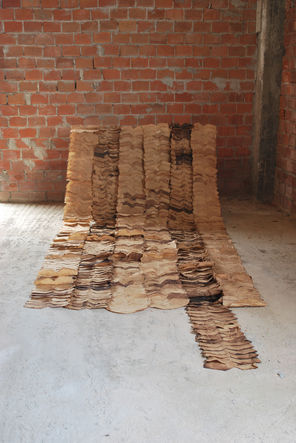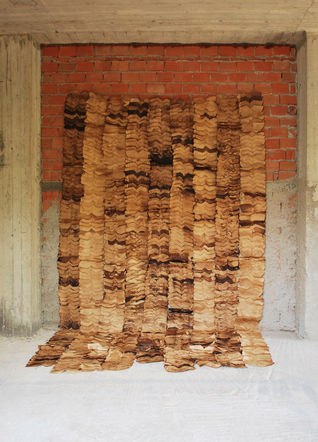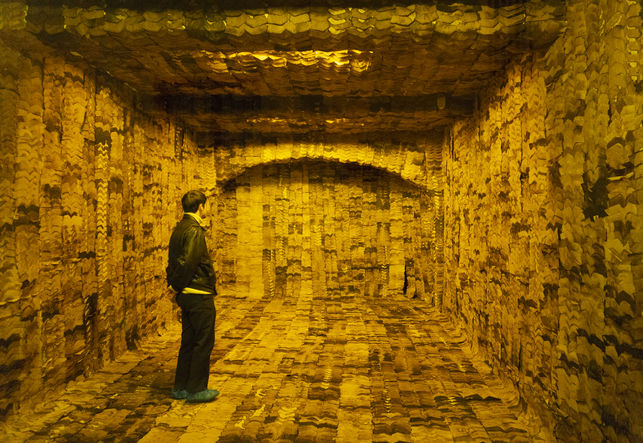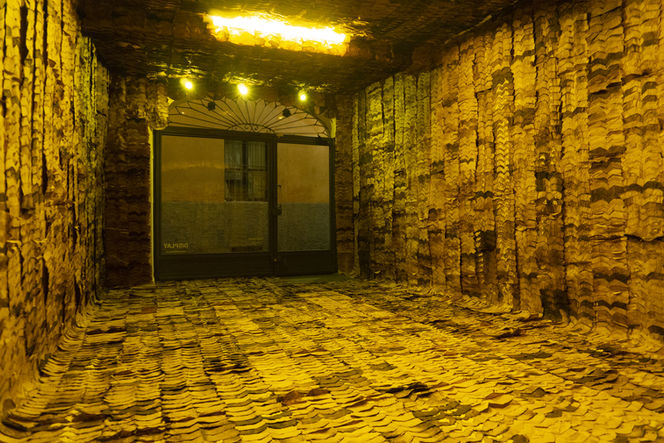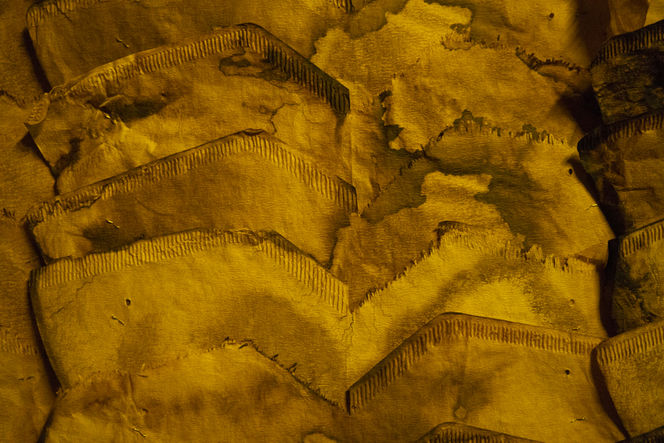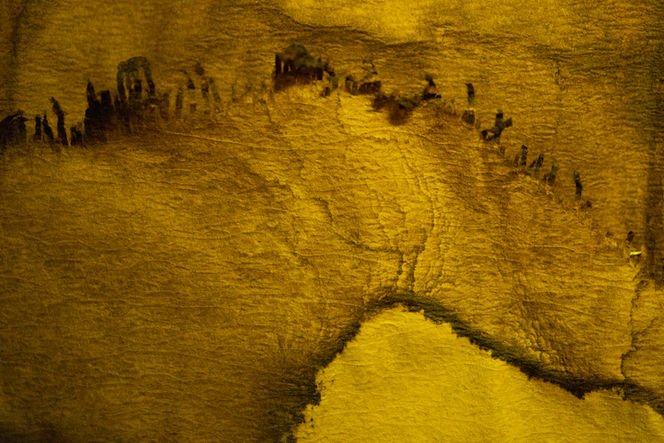top of page
Sarca
The skin is our natural identity. A record of our emotional memories and experiences.
The amorphous surface that absorbs the life cycle of the world.
The sensor of all moral conditions, the deeper emotional part that defines us.
Installation
The other dimension of "Sarca" is expressed in an installation. Movement and sound are here to ramble the viewer into a world of new experiences.
Somatica
Spazio Display
Parma, Italy
Somatica, neuter plural adjective from the Greek σωματικός, wich means "body", arises from a poetic and anatomical reflection on human body layers, from the inner organs to the skin. Artist Thalia Kerouli covers the whole exhibition space with an assemblage of papers painted with natural pigments and sun-dried until they get a rigid and yet friable texture. Floor and walls therefore function as an architectural backbone on which a new skin is grafted. Just as the body is the main conduit for experience and relationship with others, so the work demand physical touch from the viewer, it can get stepped on or be explored from close-up, revealing its own weaknesses just like any other living being. In fact, by allowing the viewer to go through the work, the artist alters the space perception with paradoxes and ambiguities which blur the distinction between inside and outside, or rather between guts and epidermis. We step through the front door and we are immediately surrounded by the work, kind of like Jonah entering the whale's belly from its maw. Thus, the space resembles the stomach of a creature that spews us out like an indigestible bite. We can feel dizzy like Astolfo from Ariosto's ’Orlando Furioso, we can feel trapped like Pinocchio swallowed by a sea monster, or simply get lost and stand still like the Tin Soldier in the tale by Andersen. First the installation engulfs us in her warm stomach, but then it saves us, spitting us out into the world again. Drawing attention from the inside-out of the body, the artist creates a double key to access the work: from an endoscopic view, the installation evokes the abdominal tissue of a zoomorphic creature, but from an outside perspective it recalls the epithelium, the last layer of the body. Paper and skin share their fibers – cellulose and cells are mixed to paroxysm - both conceived as recording media of all the stories that one can read though marks, roughness, and scars on the surfaces. In her investigation on the semiotic power of the skin, the artist gets back to her Greek roots by evoking the myth of Marsyas, who was hang on a tree and skinned alive by Apollo; this mythological figure is the starting point of a crude iconography of the body from ancient to contemporary times, along with artworks such as La bottega del Macellaio by Italian painter Annibale Carracci (1585), or Vanitas: Flesh Dress for An Albino Anorectic by Jana Sterbak (1987), who realized a female dress made of raw flesh. Instead, Kerouli conceives the skin as the very first dress people wear, and the body as something which can be leafed through like a book where traces of personal and common experiences are told. The skin is the open field of feelings and relationships, an interface and a screen showing how things are lived. Kerouli deeply stratifies the exhibition space until it looks like a snake which has shed its skin, metaphor for the empty shell of one body. And right on a delicate sheet of skin is where the deepest evidence of being in the world can last over time.
Ilaria Monti
bottom of page

























